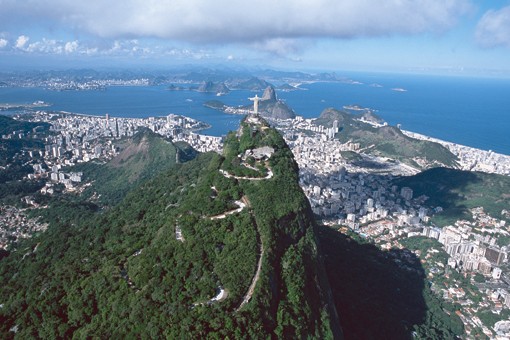 A city break in Rio de Janeiro presents an unforgettable cityscape of green mountains overlooking blue seas and long, sandy beaches. Glamorous Rio de Janeiro hotels hug the seafront, where hot days drift into balmy nights with a samba soundtrack.
A city break in Rio de Janeiro presents an unforgettable cityscape of green mountains overlooking blue seas and long, sandy beaches. Glamorous Rio de Janeiro hotels hug the seafront, where hot days drift into balmy nights with a samba soundtrack.Sun worshippers stop at Rio’s renowned Ipanema and Copacabana beaches to sunbathe and browse Brazilian craft stalls. You can wind down on Diabo beach with a coconut drink in the shade. Slip away to ride on the vintage cable car to the top of Sugar Loaf Mountain, a 396m peak protruding into the Atlantic Ocean. The Corcovado train chugs through the shade of the Tijuca Forest, where you can stop to see waterfalls, grottoes and the nearby Botanical Gardens’ tropical flowers.
Life spills outdoors in Rio de Janeiro’s beaches. You can easily join in a volleyball match on Corcovado beach, or join surfers on Barra da Tijuca beach. Hang-gliders drift on the thermals high above Pepino beach, and tall ships and yachts dock at Marina da Glória further east along the coast. Horses race at the Jockey Club, and football fans can buy tickets for a match at the Maracanã Stadium, the largest in South America with space for almost 89,000 spectators.
Art enthusiasts stay in Rio de Janeiro hotels near the National Fine Arts Museum for an introduction to 19th-century Brazilian artists like Candido Portinari. The International Naive Art Museum showcases primitive and indigenous art, with almost 6,000 brightly colored panels lining its walls. At the Metropolitan Cathedral, an emblem of modern Rio, you can take in its 1970s cone-like structure and astounding floor-to-ceiling stained-glass, while the Lapa district buzzes with bohemian bars and live music under the arches of its white Carioca Aqueduct.
Visitors on Rio de Janeiro city breaks eagerly await the sight of the 30m-high Christ the Redeemer statue, which towers over the city from the peak of the Corcovado mountain. The National History Museum presents an astounding array of art and artefacts that trace Portugal’s colonisation of Brazil in the 16th century, life on a sugar plantation and the Brazilian imperial family. Learn more about them on a boat trip and tour of the green Fiscal Island castle in Guanabara Bay, where the last ball of the empire was held in 1889.